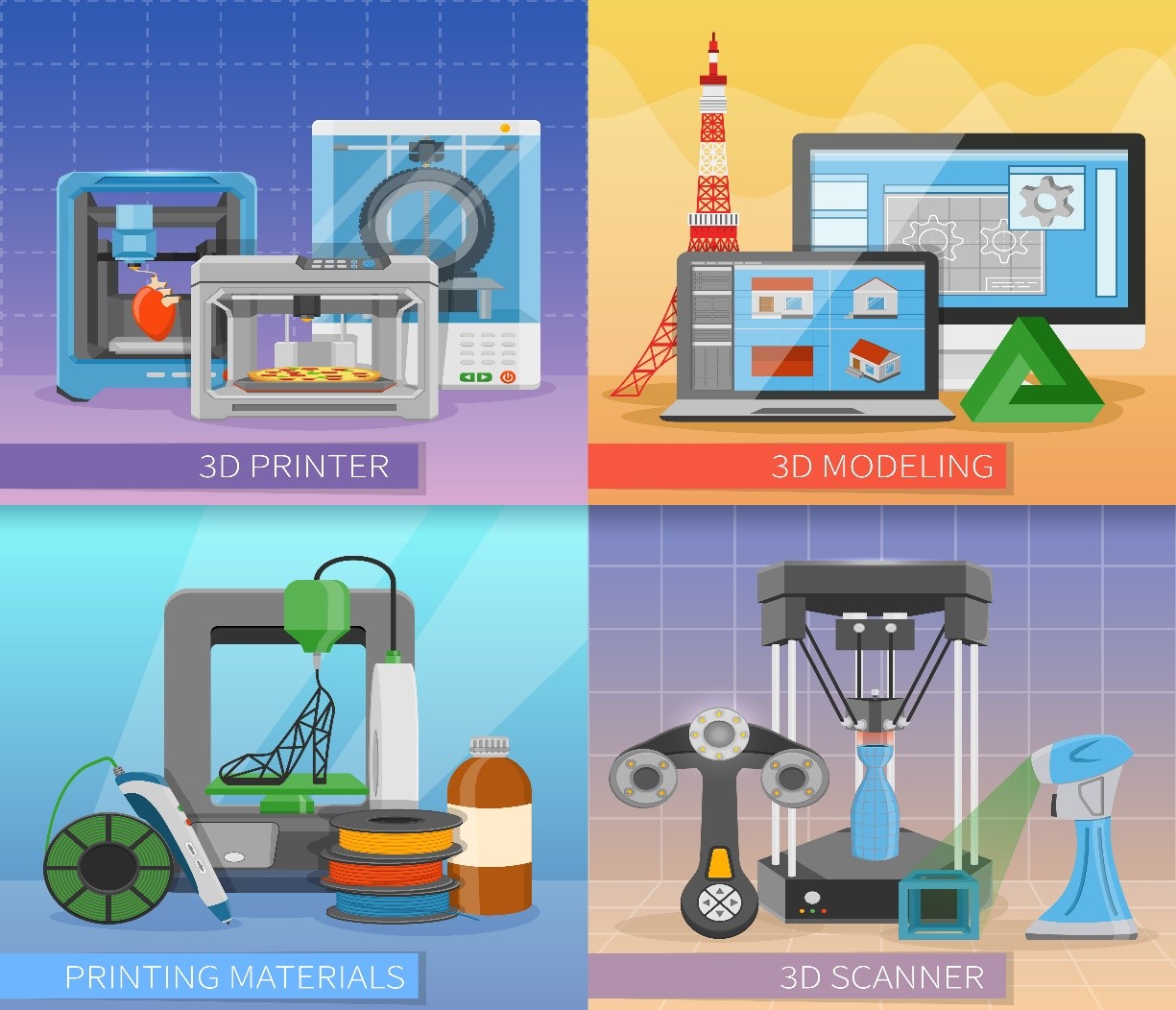Additive Manufacturing (AM)
Additive manufacturing (AM), also known as 3D printing, is a process of creating three-dimensional objects by adding material layer by layer. In traditional manufacturing, a material is subtracted from a larger block or piece to create the desired shape. However, in additive manufacturing, the object is created by adding layers of material on top of each other until the final product is achieved.

Figure 1. Additive Manufacturing (AM)
Figure 1 shows additive manufacturing. Additive manufacturing technology has been around for several decades, but it has gained significant attention and popularity in recent years due to advancements in materials, software, and hardware. It has a wide range of applications in various industries such as aerospace, automotive, healthcare, and consumer goods.
The advantages of additive manufacturing
Additive manufacturing has some distinct benefits. With traditional manufacturing, the entire supply chain can take months and require an investment — sometimes millions or billions of dollars — that can only be recouped by high-volume production. With additive manufacturing, much of the supply chain’s intermediate steps are removed. “The speed at which you can get to a single part is much faster,” said Roemer, since people can send a design directly from their computer to the 3-D printer. [1]
Manufacturing something additively also makes it possible to create objects with functionally-graded materials — meaning they can have different materials on the inside and outside. “Imagine you want something that has high conductivity, but also is abrasion resistant,” said Roemer. “On the outside, you have the abrasion-resistant materials, like ceramics, and on the inside, you have the conductive materials, like metals. Creating something like that is quite difficult to do with conventional manufacturing.”Roemer believes, though, that the two biggest advantages to additive manufacturing are creating complex geometries and producing small lot sizes.“With additive manufacturing, you produce — layer by layer — pretty much any geometry you want to create. You can create 3-D entities that are much more complex and have different material properties,” said Roemer. With subtractive manufacturing, some objects are too small or have too awkward an angle to subtract materials in the desired way. Additive manufacturing eliminates that barrier. This also means that manufacturers can eliminate weight from an object. This is particular important in the aerospace and automobile industries, where weight can affect the functionality of a final product. [1]
Additive manufacturing also makes it easier to create small amounts of something. With traditional manufacturing, setup costs mean producing small lots is not cost effective. But with additive manufacturing, setup costs are mostly eliminated, so creating just a handful of objects becomes more reasonable. This makes customizing products, like prosthetics or implants, easier, and could result in better outcomes for patients. Hearing aids, which are customized for each person, are almost entirely additively manufactured. [1]
However, there are also some challenges associated with additive manufacturing, such as the limited range of materials that can be used, high cost of equipment and materials, and the need for specialized skills and training to operate and maintain the equipment.
References:
- https://mitsloan.mit.edu/ideas-made-to-matter/additive-manufacturing-explained
Cite this article:
Hana M (2023), Additive Manufacturing (AM), AnaTechMaz, pp.238















